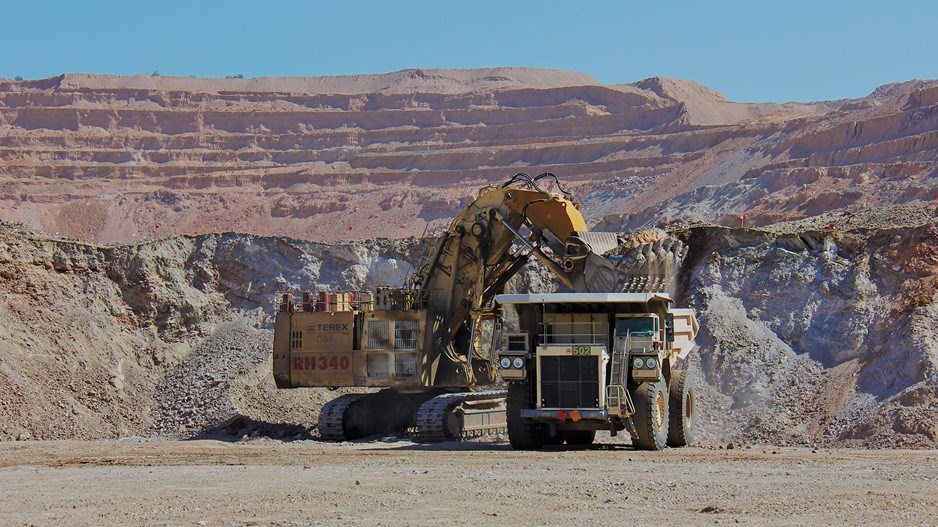During the worst pandemic in over a century, many companies are trying to stay above water and many would appreciate steady year-over-year revenue, let alone sales growth.
The context of the pandemic makes Equinox Gold Corp.’s (TSX:EQX) mind-boggling 96,081.2% revenue growth over five years even more amazing.
Equinox Gold recorded the largest revenue growth on BIV’s top 100 fastest-growing list since 2013 and posted greater growth than all the first-place companies combined in the intervening years.
“We had this vision of creating a top 10 or 15 gold mining company in the world, and do it in a five-year period,” said Christian Milau, CEO of Equinox Gold. “We’re not quite there yet, but we’ve come a long way.”
But how did the company grow from $1.18 million in revenue and an inactive Brazilian gold mine in 2016 to posting $1.13 billion in revenue and seven operating mines in 2020?
Equinox Gold achieved this goal through a three-pronged approach: Growing and acquiring new mines, developing its mines and continued exploration. For the first three years after taking over Luna Gold Corp., the company focused on acquiring mining assets through mergers and acquisitions. During this time it also set a goal of building one mine per year, which it accomplished. Now that Equinox Gold has built up its portfolio, Milau says it’s more about developing current holdings while still focusing on acquiring assets and exploration.
Equinox Gold’s success comes down to having a long-term view of the industry, according to Milau. He said the industry often takes a short-term approach, wanting to rapidly turn around assets for a quick return.
Equinox Gold, on the other hand, has focused on looking further down the horizon, taking the time and money to develop the mines it invests in, he said.
“We’re not just here to buy assets, flip them, make a bunch and walk away,” said Milau. “We’re here to build a company that’ll last beyond [our] lifetimes.”
He added that luck also played a role in the company’s astronomical growth.
Broadly, the gold mining industry has benefitted from gold prices, which have increased 75% from a low of $1,000 an ounce in 2016. Entering the market in 2016 and taking over Luna Gold Corp. during the low was fortuitous timing.
However, success takes more than luck, and the only reason Equinox Gold was able to capitalize on that luck was because it had the right pieces in place, such as having capital at the low end of the mining cycle when investments typically dry up.
Milau and his management team found a mining asset in Brazil they liked. The mine had seen some success before ultimately failing and being bought by his group.
It took more than luck to attract the attention of Vancouver business tycoon and Pan American Silver Corp. (TSX:PAAS) founder Ross Beaty, who merged Luna Gold with his company to create Equinox Gold in 2017.
Attracting investments from established resource investors like Beaty and mining billionaire Richard Warke is easier said than done. Milau said that his team was able to attract the interest of these established investors by having a strong asset and management team that understood the space. Being in the right place at the right time also helped, he added.
Milau had met Beaty at a previous company but got to know him on ferry rides to Bowen Island talking about gold and other commodities. They both had mining assets competing in Brazil and talked while crossing Howe Sound about eventually partnering up.
Milau, Beaty and Warke, as well as a senior Equinox Gold executive, then sat in a room without lawyers or bankers and hashed out their business plan for the new company. Milau said finding camaraderie with people who have a shared vision was critical to their success, particularly within the mining industry.
“If you have differing views on strategy, your board meetings become less effective, your ability to be nimble, grow, transact and take advantage of opportunities become a lot weaker,” he said. “You see a few companies in our sector now who are big and bureaucratic and can’t make decisions as quickly or easily; where we’re more entrepreneurial.”
Established investors also played a large role in the company’s sustained growth. Most fund managers get money pulled away from them when they’re down, according to Milau. By partnering with established investors within the industry, Milau said they were able to find more patient capital and were able to survive the industry lows to benefit from the highs in revenue growth, which they did to the tune of 96,000%. •




